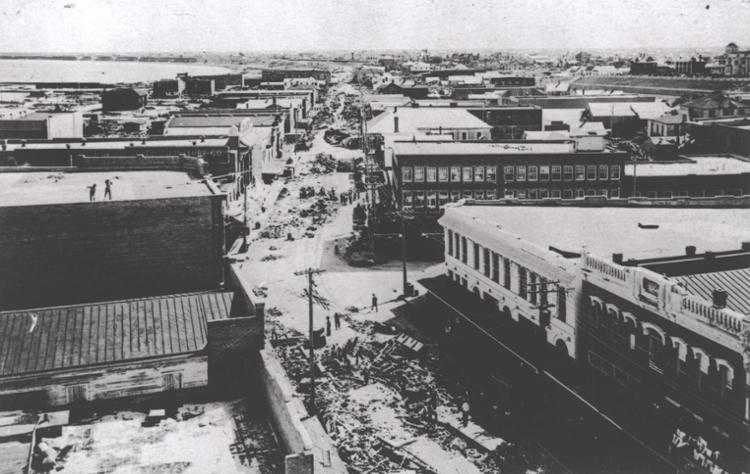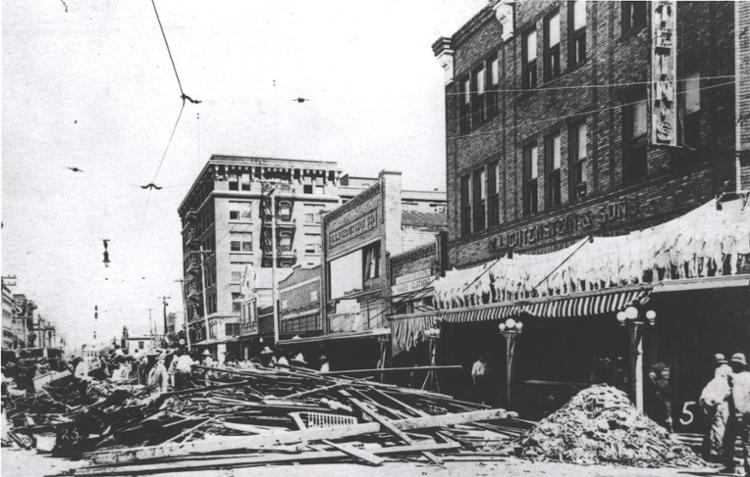While Hurricane Harvey is still fresh in everyone’s memories, this is not the only storm to leave an impact on Corpus Christi. Hurricanes have marked Corpus Christi’s history and culture. Each storm impacted the city and changed its landscape. The engineering of downtown revolves around the impact of hurricanes.
In the late 1800s many hurricanes molded Texas. A storm leveled Indianola in 1875 and again in 1886. After these twin storms the settlement disperse instead of rebuilding on the coast. In 1900 a great storm destroyed Galveston.
For decades the people of Corpus Christi believed they were guarded against hurricanes because they were built on a bluff above sea level. Indianola and Galveston had both been devastated by massive hurricanes, but Corpus Christi escaped major storm damage.
In August of 1916 a storm hit Corpus Christ and had relatively limited damage and only caused a few casualties. This emboldened the feeling of immunity that the citizens of Corpus Christi felt.
The false sense of security evaporated with a hurricane that hit on September 14, 1919.

On September 13th, the people of Corpus Christi were unaware of the storm’s change in course. They believed the storm would pass with little damage or even miss the city entirely.
The day went by as many others had; they did not know the horror that awaited them. The false sense of security of the natural advantages of Corpus Christi’s landscape would be lost in just a few short hours. Much of the city was built below the bluff in the Downtown and North Beach areas. These areas offered little protection from storm surge. In the early morning hours of September 14, the storm moved across the area. The people had less than a day to prepare and many ignored those warnings.
Corpus Christi learned that no one was immune from hurricanes after this night. The seawall, breakwater, and other measures were put in place to thwart storm surge that had devastated the population after this storm. Hurricane warnings would not be ignored again, and public administration put hurricane preparedness to the forefront of urban planning. The storm is still studied to help understand hurricanes and the civil engineering a city must undertake to lessen their impacts.
100 Years After the Storm

We will be hosting an event on Friday September 13th to commemorate the 100th anniversary of this devastating storm. The “100 Years After the Storm” event features author, historian, guest lecturer, and Islander alumna Mary Jo O’Rear. The program will also include a panel discussion by faculty experts along with a display of historical photos and documents relating to the storm. The event is free and open to public, with a meet and greet and light refreshments following the panel discussion.
The ability to study the 1919 Hurricane is thanks in part to the saved photos, letters, and other documentation of the time. It is important to save these items for future use. In Special Collections and Archives, we hold several collections that contain information on the 1919 Hurricane. We hope to encourage everyone to donate their items to ensure other storms are likewise documented.
While the 1919 Hurricane is well documented with our archives, other storms like Celia and Harvey only have a few items. If you or your family have items that document these storms, please contact Special Collections and Archives to donate them to help future research on these storms or bring them to our event.
Related Online Collections:
- L. H. Gross Collection
- Hurricane Harvey Oral History Collection (HIST 3345: America by Nature, Fall 2017)
- Hurricane Harvey Oral History Collection (HIST 5370: Oral History-Techniques and Practices, Fall 2017)


